Art Nouveau is said to be the first modern style to flourish at the dawn of the 20th century. When it comes to architecture, some debate exists about whether it was a style or a detail, but one thing is for certain: it was quite revolutionary, and the French city of Nancy was at the center of it.
Nancy’s impressive mix of architectural styles creates an atmosphere that’s impossible to ignore, making this city a visual delight. Art Nouveau architecture had a lasting impact here, which is no surprise since this is where the style of architecture developed.
Contrary to the precise geometry of Neoclassical forms, Art Nouveau (“new art” in French) drew inspiration from the natural world in an attempt to create something new. It embraces all forms of art and design, including painting, glassware, furniture, graphic design, and architecture. The style was first showcased in Paris, causing mixed reactions; while some people loved it, others despised it.
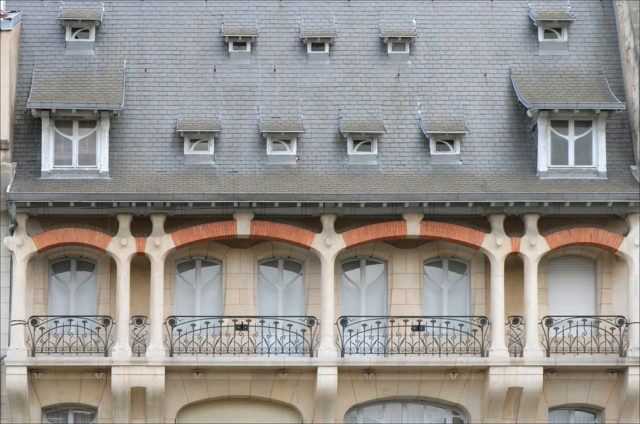 Art Nouveau building of France Lanord, Nancy. Photo Credit
Art Nouveau building of France Lanord, Nancy. Photo Credit
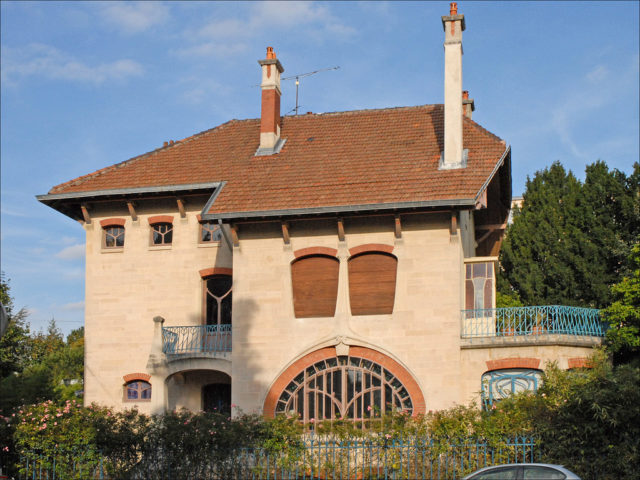 The Villa Les Glycines of the merchant Charles Fernbach is located in the park of Saurupt. It was designed by the architect Emile André (1871-1923) of the School of Nancy. Photo Credit
The Villa Les Glycines of the merchant Charles Fernbach is located in the park of Saurupt. It was designed by the architect Emile André (1871-1923) of the School of Nancy. Photo Credit
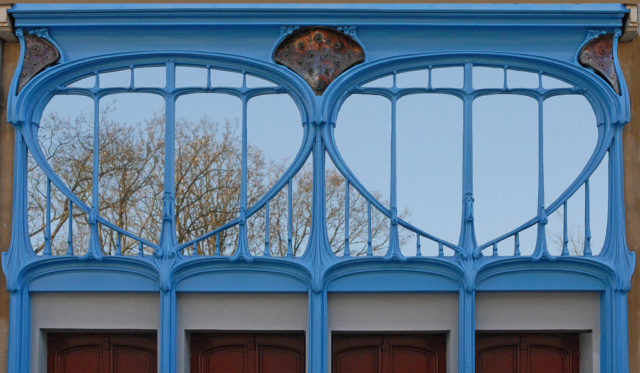 Shop Vaxelaire. Photo Credit
Shop Vaxelaire. Photo CreditAt the turn of the 20th century, there was no other style in European architecture and design as popular as Art Nouveau. Designers were rebelling against the historical, academic styles of the 19th century and looked to the future, creating a style never seen or experienced.
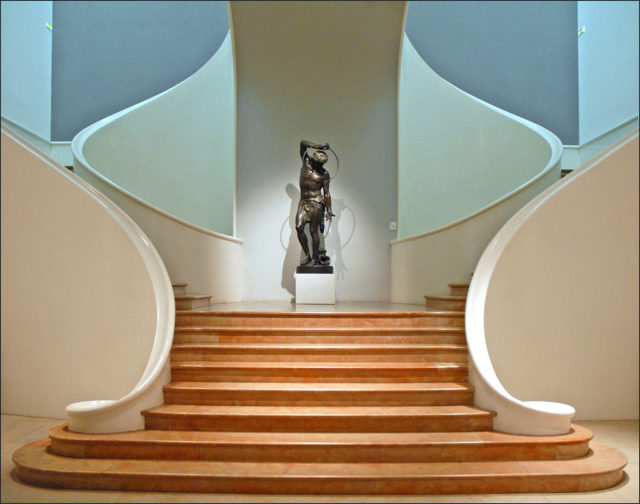 Musée des Beaux-arts de Nancy. Photo Credit
Musée des Beaux-arts de Nancy. Photo CreditIn a short period, Art Nouveau spread across many large European cities, including Paris, Barcelona, Vienna, Munich, Glasgow, and Turin. However, within a decade the style receded in most of these cities and was no longer chosen by architects.
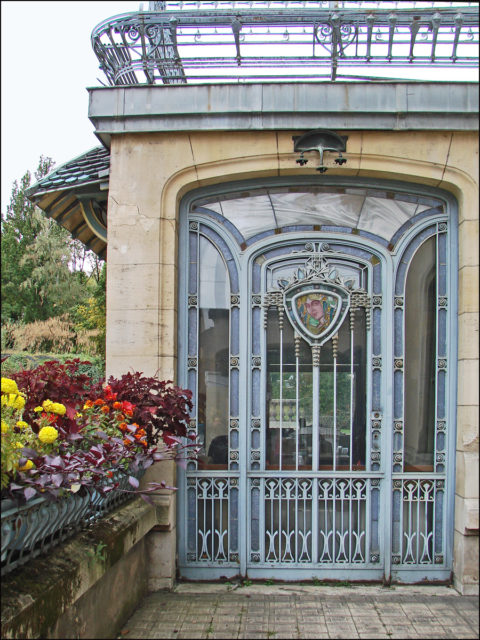 Musée de l’Ecole de Nancy. Photo Credit
Musée de l’Ecole de Nancy. Photo CreditThis was not the case with the city of Nancy, however, where it took an additional decade before Art Nouveau faded. It remained the dominant style in Nancy’s architecture until the outbreak of World War I, leaving a lasting impact on the small city.
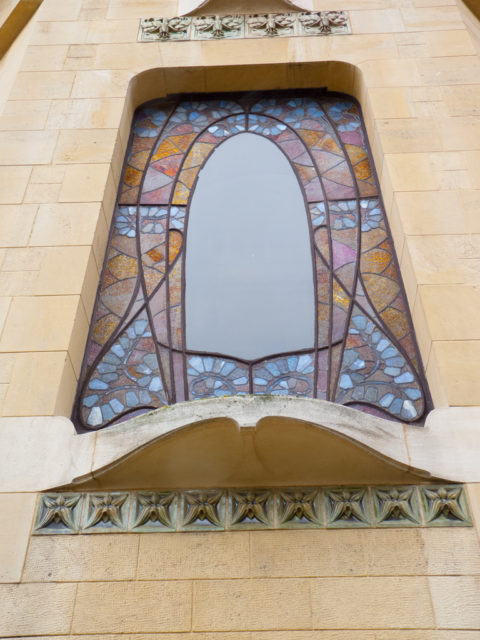 La Villa Majorelle, Nancy. Photo Credit
La Villa Majorelle, Nancy. Photo CreditIn the period between the Franco-Prussian War and World War I, Nancy’s population doubled. The city experienced considerable economic development, but most importantly, Nancy became a major center of French decorative arts.
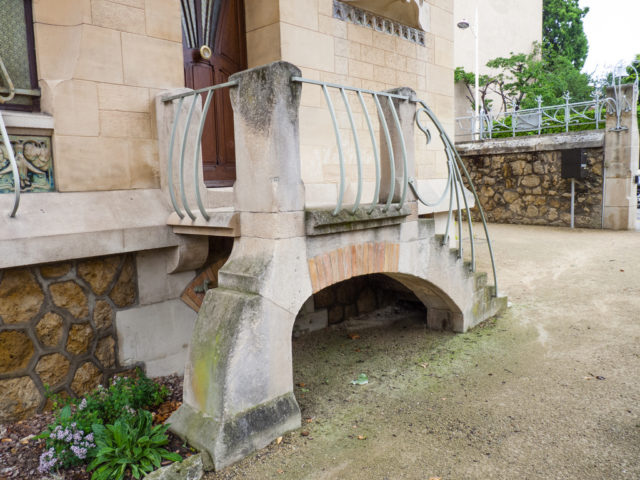 La Villa Majorelle, Nancy Photo Credit
La Villa Majorelle, Nancy Photo CreditThe capital of the Lorraine region became a hub for art and Art Nouveau architecture, mostly thanks to the artists and architects who cleverly combined their skills with the goal of creating some of the finest buildings in Europe.
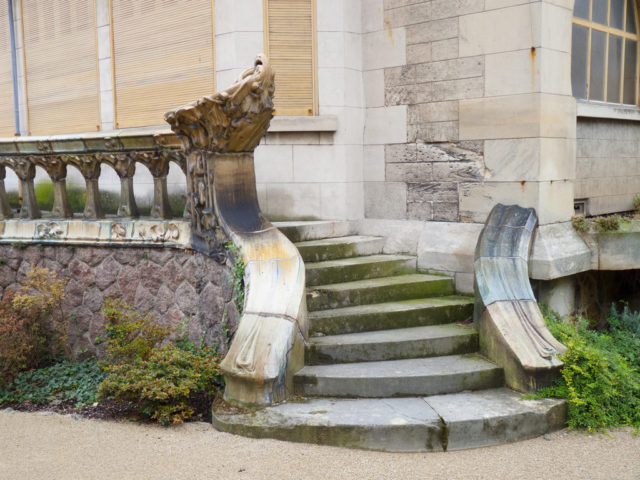 La Villa Majorelle staircase, Nancy. Photo Credit
La Villa Majorelle staircase, Nancy. Photo CreditWhy did it happen there in particular? The development of the Art Nouveau movement in Nancy has a geopolitical background closely connected with the appearance of the newly unified German state in 1871.
After the humiliating defeat of Napoleon III in the Franco-Prussian War and the annexation of Alsace and Lorraine, many young artists, designers, architects, and cultivated people fled the annexed territories and found their new home in the city of Nancy.
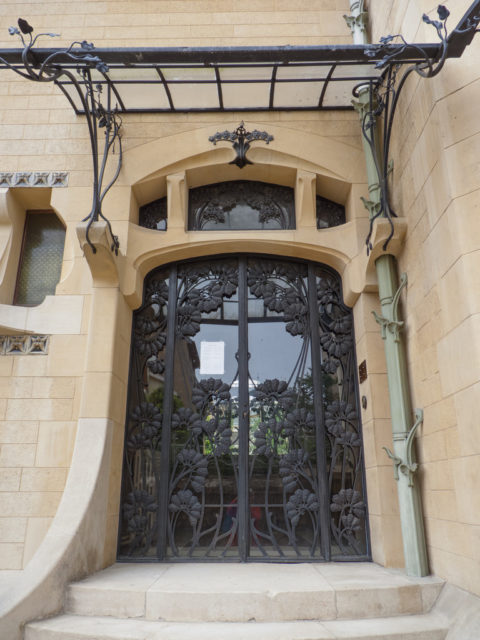 La Villa Majorelle entrance, Nancy. Photo Credit
La Villa Majorelle entrance, Nancy. Photo Credit
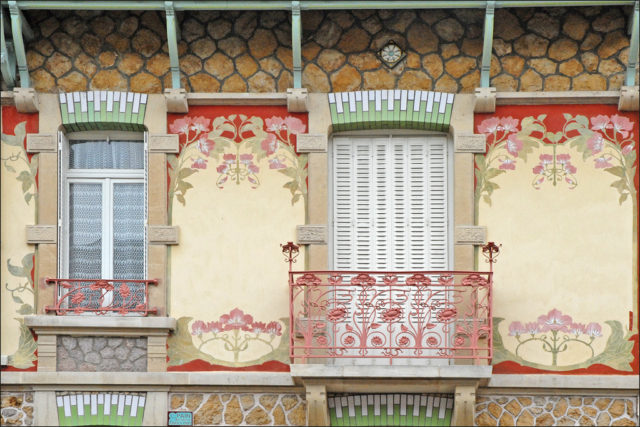 Decor of a house on rue Félix Faure. Photo Credit
Decor of a house on rue Félix Faure. Photo CreditWhat marked the turn of the 20th century was the activity of the École de Nancy (or the Nancy School), an organization focused on enhancing the prestige of Lorraine by producing high-quality decorative arts and architecture.
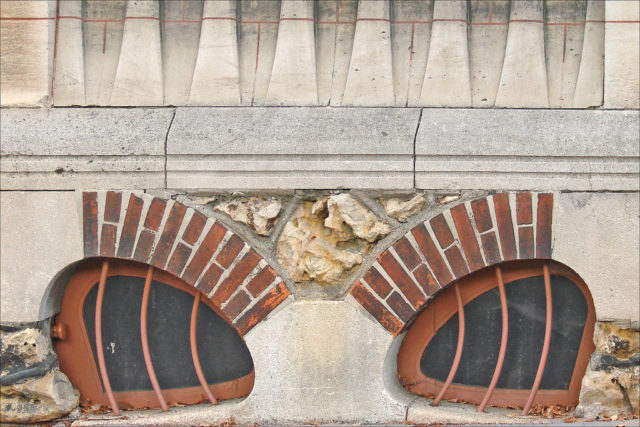 Detail of the facade of the Huot house designed in the art nouveau style of the École de Nancy by architect Emile André in 1903. Photo Credit
Detail of the facade of the Huot house designed in the art nouveau style of the École de Nancy by architect Emile André in 1903. Photo CreditA cultural explosion followed in Nancy after 1901 when the École was founded and the small city was soon transformed into a key center of the movement.
The leader and founder of the École de Nancy was Émile Gallé, one of the best glass artists of his time and the leading initiator and driving force behind the Art Nouveau movement.
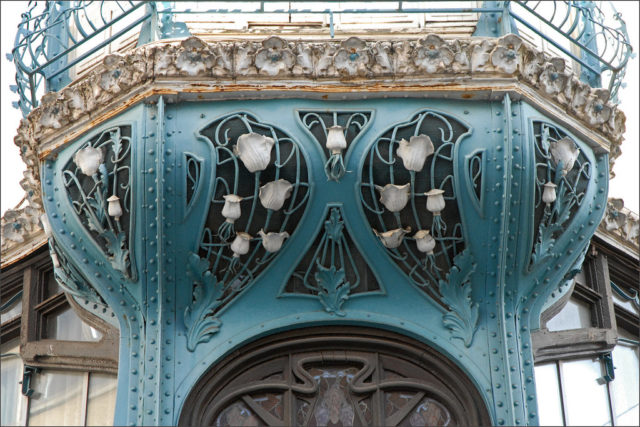 Detail of the facade of the Genin-Louis. Photo Credit
Detail of the facade of the Genin-Louis. Photo CreditGallé was destined to become a glassmaker since his father was also one and owned a glass and ceramics factory in Nancy. He began learning the skills at an early age and eventually took over his father’s factory.
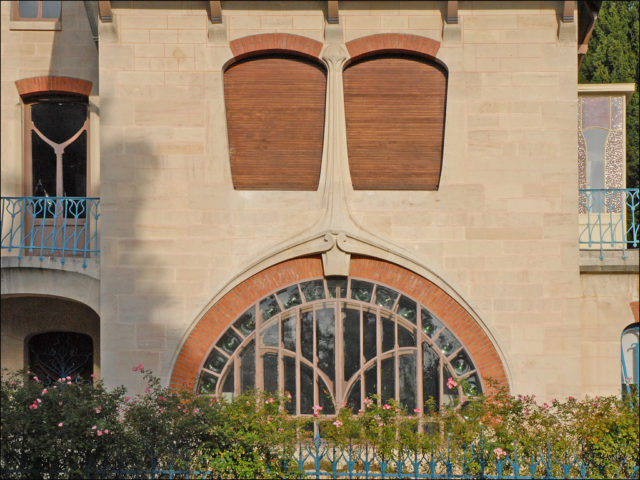 Detail of the facade. Photo Credit
Detail of the facade. Photo CreditIn order to improve his knowledge of glassmaking, Gallé traveled extensively and visited a great number of museums, including the Victoria and Albert Museum in London. Soon he started experimenting with the techniques he learned, and by 1889 he presented his own new types of glass at the Paris International Exhibition, establishing himself as one of the greatest glass artists in Europe.
Gallé and his École de Nancy are responsible for encouraging the alliance between art and industry that eventually led to the development of Art Nouveau.
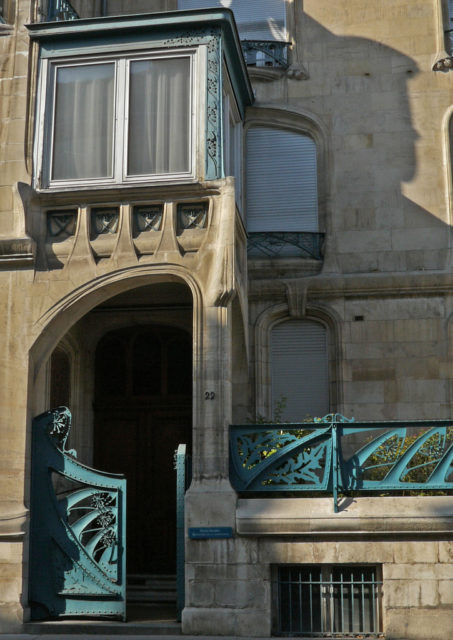 Art Nouveau house. Photo Credit
Art Nouveau house. Photo CreditGallé was not alone in his mission to promote the movement; his fellow Nancy artists and designers from the École, including Louis Majorelle, Jacques Gruber, Victor Prouvé, Eugène Vallin, Lucien Weissenburger, and many others, were there to support Gallé’s efforts. They earned a worldwide reputation for their work.
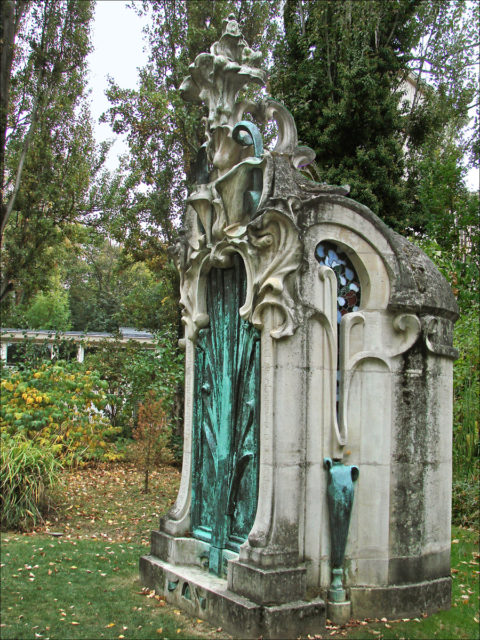 Art Nouveau Funerary-Monument-Nancy. Photo Credit
Art Nouveau Funerary-Monument-Nancy. Photo CreditStarting from 1901, when the École de Nancy was founded, Gallé served as its president until he died from leukemia in 1904, at the age of 58. He was a respected man in Nancy’s artistic community while alive and upon his death, he became revered.
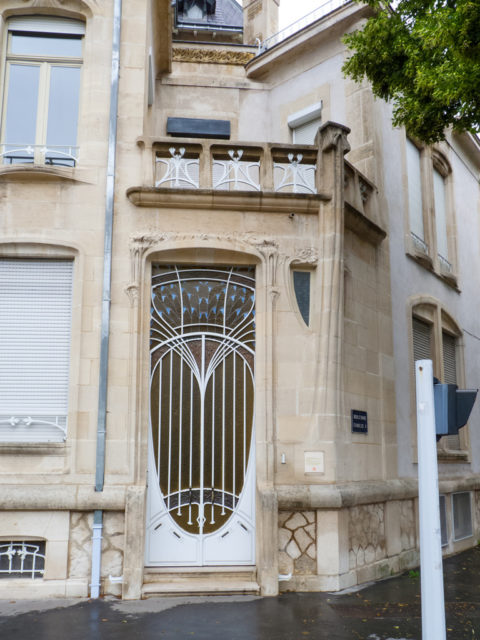 Art Nouveau Door, Nancy. Photo Credit
Art Nouveau Door, Nancy. Photo CreditVictor Prouvé, who was previously one of the leaders of the Art Nouveau movement in Nancy, took over the presidency of the École de Nancy in 1904. Gallé’s death and Prouvé’s presidency coincided with a waning of interest and the movement slowly fell out of favor in France.
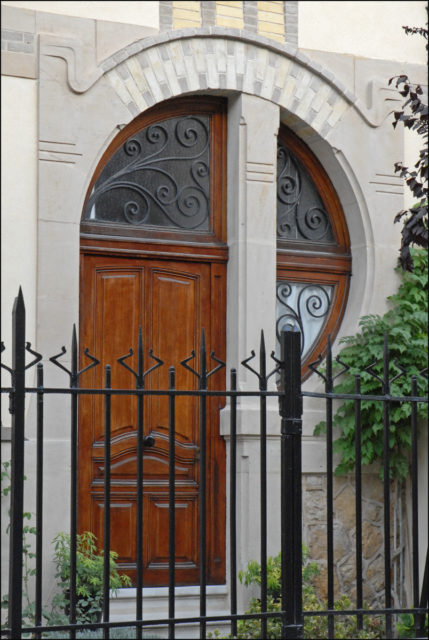 Art Nouveau villa in Saurupt Park. Photo Credit
Art Nouveau villa in Saurupt Park. Photo CreditMany artists from Nancy distanced themselves from the movement, declaring that the work of the École de Nancy was not Art Nouveau. Instead, they called it Art Lorrain. The 1909 International Exhibition in Nancy was the last major Art Nouveau event and a very significant one in the history of modern architecture.
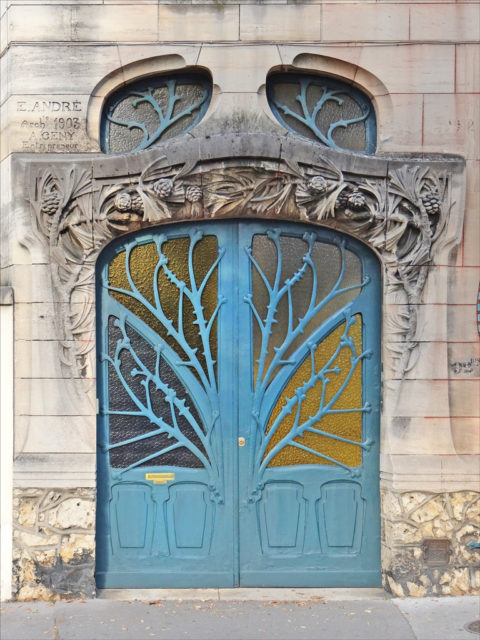 Entrance of the Huot house designed in the art nouveau style of the École de Nancy by architect Émile André in 1903. Photo Credit
Entrance of the Huot house designed in the art nouveau style of the École de Nancy by architect Émile André in 1903. Photo CreditThe Art Nouveau movement didn’t just shape the civic identity of Nancy but also influenced architecture and art across Europe. Although Nancy was a small city, with a population of around 100,000 at the turn of the 20th century, artistically it was on the same level as Paris, even challenging Paris’s authority as a cultural metropole of France.
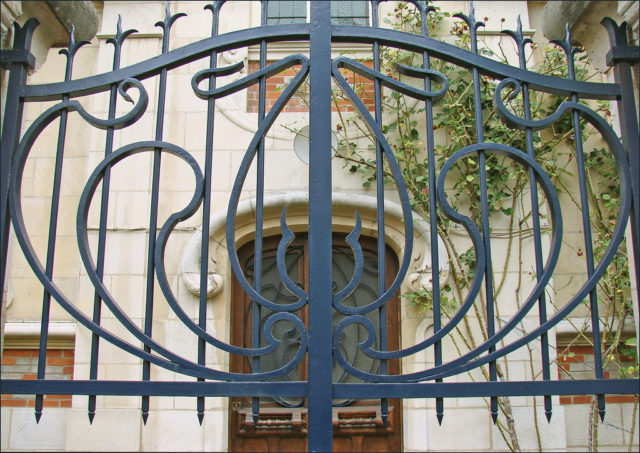 Gateway to a house in rue Félix Faure, Art Nouveau district of Nancy. Photo Credit
Gateway to a house in rue Félix Faure, Art Nouveau district of Nancy. Photo CreditUnlike other centers of Art Nouveau such as Paris, Barcelona, Vienna, and Glasgow, where the style was exclusively urban, this was not the case with Nancy. The entire region of Lorraine showed a great enthusiasm for Art Nouveau, and many buildings were built in that style.
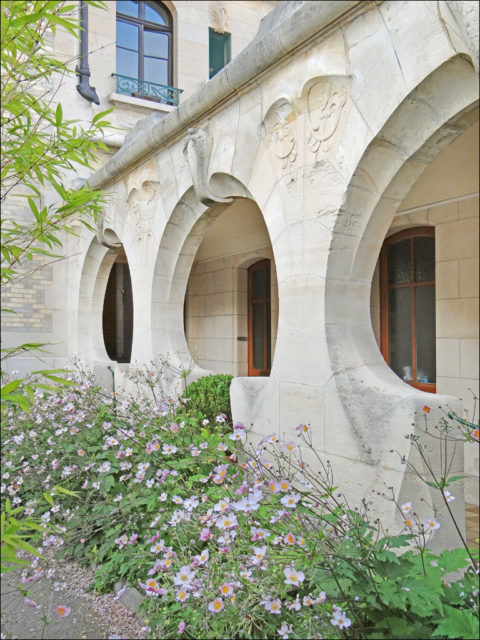 House of Victor Luc of Art Nouveau style (Nancy). Photo Credit
House of Victor Luc of Art Nouveau style (Nancy). Photo CreditNancy’s Art Nouveau masters are credited with the creation of many of the buildings across Lorraine, but many local architects also adopted the style.
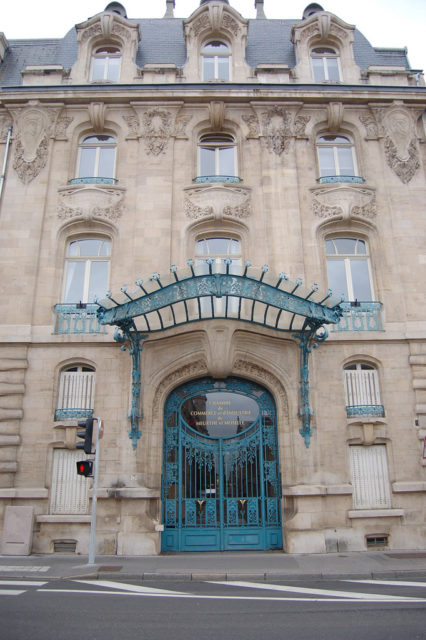 Art Nouveau, Nancy. Photo Credit
Art Nouveau, Nancy. Photo CreditNancy’s Art Nouveau also influenced the German cities nearby. In the annexed territories of Alsace and Lorraine, there was an impressive enthusiasm for it, but the movement never achieved the dominant status it had in France.
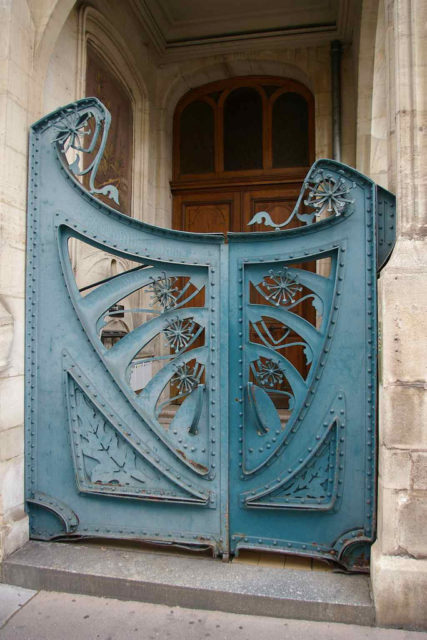 Art Nouveau Photo Credit
Art Nouveau Photo CreditHouses were the first Art Nouveau buildings in the city, used for all types. However, the best examples were the ones built for the wealthiest residents of the city.
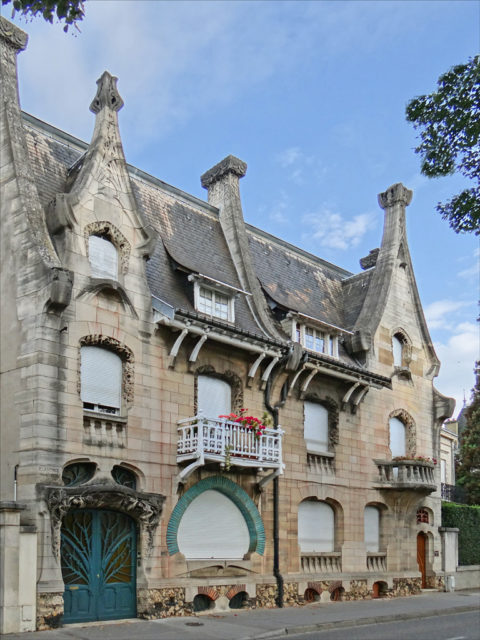 Huot House in Art Nouveau style (Nancy). Photo Credit
Huot House in Art Nouveau style (Nancy). Photo CreditMany of the city’s most affluent citizens were either members of the École de Nancy or great patrons of Art Nouveau and were close to the artists. They had no doubts about their skills and gave them complete freedom to experiment with the design.
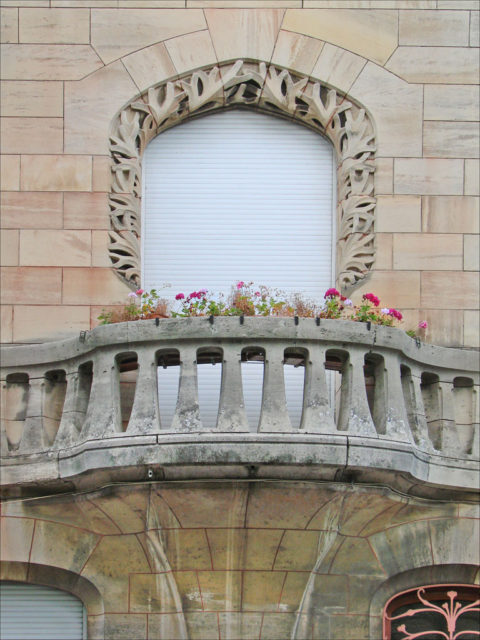 Balcony of the Huot House. Photo Credit
Balcony of the Huot House. Photo CreditMany commercial buildings in Nancy also showcased the style, with the most important among them being the department stores. With a stunning exterior, including long rows of windows and entirely open façades, department stores were the first commercial buildings to display it.
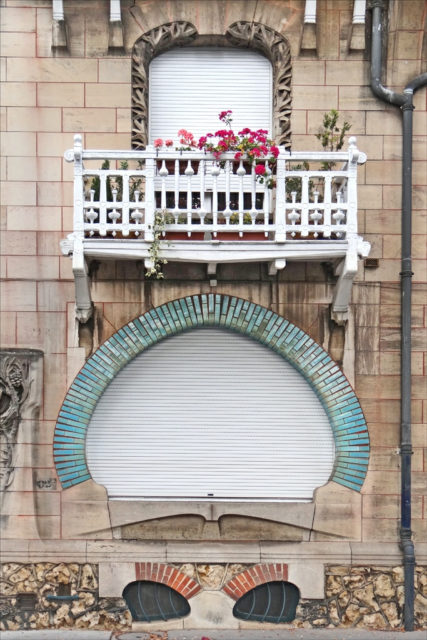 Huot House, Nancy Photo Credit
Huot House, Nancy Photo Credit
 Balcony of the Weissenburger house in Art Nouveau style (Nancy) Photo Credit
Balcony of the Weissenburger house in Art Nouveau style (Nancy) Photo Credit
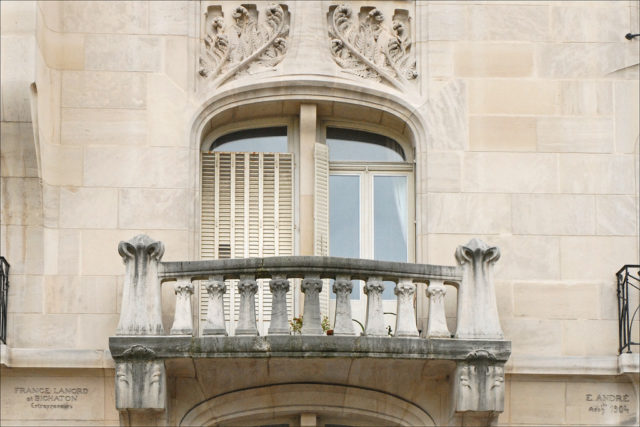 Art Nouveau building of France-Lanord-Nancy. Photo Credit
Art Nouveau building of France-Lanord-Nancy. Photo CreditOver the years, Art Nouveau became an integral part of the regional identity in Lorraine and even served as a symbol of freedom, and resistance to Germanization, following the Franco-Prussian War and the annexation of Alsace and Lorraine.
Related story from us: Riga, the city with the largest collection o...
What was once the newest craze in European architecture fell out of favor. However, the works of the École de Nancy did not fade away, and its Art Nouveau architecture can still be seen everywhere by visitors drawn to this city.














Pentru a putea adăuga comentarii trebuie să fii membru al altmarius !
Alătură-te reţelei altmarius